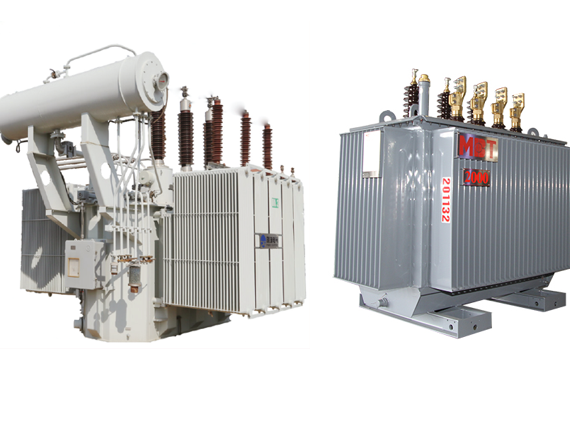The differences between Power transformers and distribution transformers
A transformer is a passive component that transfers electrical energy from one electrical circuit to another circuit or multiple circuits.
Depending on the design, function, purpose of applications and winding configuration distinguish them for different applications such as civil and commercial (domestic and industrial).
In this article, we will show the key differences between power transformers and distribution transformers.
Tables of Content
1. What is a power transformer?
2. What is a distribution transformer?
3. Difference between power transformers and distribution transformers
b. Transformer size and insulation level
1. What is a power transformer?
A power transformer in a generating station or substation with a very high MVA (mega Volt-Ampere) used to transmit high power electricity over power lines to a distribution center is called a transmission transformer.
They are typically over 200 MVA with voltage ratings of 400kV, 200kV, 110kV, 66kV, 33kV, etc. They are designed to operate at full load with maximum efficiency.
The main purpose of a transmission transformer is to step up a low generation voltage to a high voltage level and transmit it through the transmission line to the distribution substation for further processing.
2. What is a distribution transformer?
A distribution transformer is also referred to as a typical isolation transformer. The main function of this transformer is to convert the high voltage into standard voltage like 240/120 V for use in power distribution. In the distribution system, there are different types of transformers, such as single-phase, 3-phase, underground, pad-mounted, and pole-mounted transformers.
Purpose of using transformer:
• This transformer changes from high voltage to low voltage, used in homes and businesses.
• The main function of this is to reduce the voltage to provide isolation between the two windings as primary and secondary.
• This transformer distributes electricity to remote areas generated from power plants.
• Generally, this transformer distributes electrical energy to industries with less than 33KV voltage and 440V to 220V for domestic purposes.
3. Difference between power transformers and distribution transformers
a. Functions used
Power transformers used in transmission networks have a higher voltage for ladder and step applications (400 kV, 200 kV, 110 kV, 66 kV, 33kV) and are typically rated above 200MVA.
A distribution transformer is used for the lower voltage distribution network to connect end-users. (11kV, 6.6 kV, 3.3 kV, 440V, 230V) and generally rated below 200 MVA.
b. Transformer size and insulation level
The power transformer is used for transmission at heavy loads, a high voltage greater than 33kV & 100% efficiency. It is also larger in size than distribution transformers; it is used in power generation stations and transmission substations-high insulation level.
Distribution transformers are used to distribute electrical energy at a low voltage below 33KV for industrial purposes and 440v-220v for residential purposes.
It works with low efficiency at 50-70%, is small in size, easy to install, has a low magnetic loss and it is not always fully loaded.
c. Maximum efficiency
The main difference between a distribution transformer and a source is that a distribution transformer is designed to achieve maximum efficiency at 60% to 70% load because it normally does not always operate at full load. Its payload depends on the demand for distribution. Whereas a transformer is designed to achieve maximum efficiency at 100% load as it is always running at 100% load near the generating station.
Distribution transformers are used at distribution levels where voltages tend to be lower. The secondary voltage is almost always the voltage supplied to the end consumer. Due to voltage drop limitations, it is often not possible to provide that secondary voltage over large distances.
Consequently, most distribution systems tend to involve multiple 'clusters' of loads fed from the distribution transformer, and this means that the distribution transformer heat rating does not have to be too high to support the load they must serve.
Related Articles:
If you need to buy a transformer to ensure the best operation of your plant, it is important that you choose a reputable transformer manufacturer. MBT Electrical Equipment Joint Stock Company is one of the most reputable and reliable manufacturers of distribution transformers in Vietnam. Our company offers a wide variety of transformers and also offers customized transformers to meet your requirements.

